How to become healthy? It can be difficult to commit to a healthy way of living. Staying in age-old, comfortable routines often appears easier than applying changes. By acquiring an active lifestyle, eating healthy food, and making time for things that promote happiness, you can get your life on a far better track in just 14 days. Though health is a lifelong venture, starting steady and committing to 14 days of a healthy you is an amazing way to see that a different way of living is possible, and brings ample benefits to both body and mind.

Method 1 : Physical Activity

Set primary and clear goals for yourself to get in the right set of mind. When you’re planning out to get fit, it can be difficult to know from where to start! Before you start to work, spend some time thinking about the reason you’re doing it and what you want to achieve. From there, set some realistic and specific goals for yourself. This will make it easier for you to stick to your plan to become healthy.
Set goals that are actually SMART (specific, measurable, attainable, relevant, and time-bound). If your goals are too overambitious or vague, you’ll easily get frustrated!
It can be useful to break your larger goals up into smaller ones. For instance, maybe your general goal is to lose 5 kg over the next month. Try setting smaller objectives, like “I will walk for at least 30 minutes a day for the next 14 days,” and “I’m only going to eat home-cooked meals made from fresh ingredients during that time.”
ask a friend or family member about your smart goals—they can help you stay on track!
No.1. Go walking instead of using car when you can.

This can again depend on where you live, but spending less time in the car and more time on feet will help you lose weight, reduce stress, and enhance your mood. For instance, If you have the option, walk or bike to work or the grocery store instead of driving, I would recommend you to choose your feet to walk you through.
Otherwise, if this isn’t possible for you, compulsorily carve out 30 minutes a day to go for a walk.
Invite a friend to go walking with you. This will give you a dose of healthy exercise and social activity at the same time!
No.2 Plan a workout program to keep yourself on track.

Figure out the time you have each day to work out. Be realistic in your expectations and make a plan that you will be able to stick to
According to the studies, the recommended amount of exercise for healthy adults is 2 and a 1/2 hours (150 minutes) each week of moderate aerobic exercises like running, jogging and amount of strength training should be upto 2 or more times per week. This can be broken up to the level of your fitness.
If you can, commit to cardio training 30 minutes a day, 5 days a week, which meets the recommended 150 minutes. Or maybe an hour cardio class (like Zumba, dancing) 3 times a week might work better for your schedule.
Or maybe you need to break it up even more. For instance, 20 minutes in the morning before work and another 20-minutes walk on your lunch break.
On days when you’re really busy or feeling lazy, even a 7-minute workout routine can surely make a difference!
Making yourself a realistic workout schedule will help you plan workouts and exercise regimes that can be accomplished within your timeframe and make you more likely to achieve your goals.
No.3. Include strength training into your routine.

Building strength produces lean muscle mass and makes you feel and look toned and healthy. The best way to strength train effectively is through compound movements (movements that use more than one muscle group) such as deadlifts, squats, and bench presses.
The aim is to have strength training at least twice a week and to focus on all the major and bigger muscle groups.
Talk to an expert or trained friend to learn how to safely carry out compound movements with weight.
You can also make use of handheld weights to focus on specific areas of the arms. While using handheld weights or doing bodyweight exercises, try to achieve for 3 sets of 10-15 repetitions.
No. 4. Start performing high-intensity interval training (HIIT) to become fit faster.
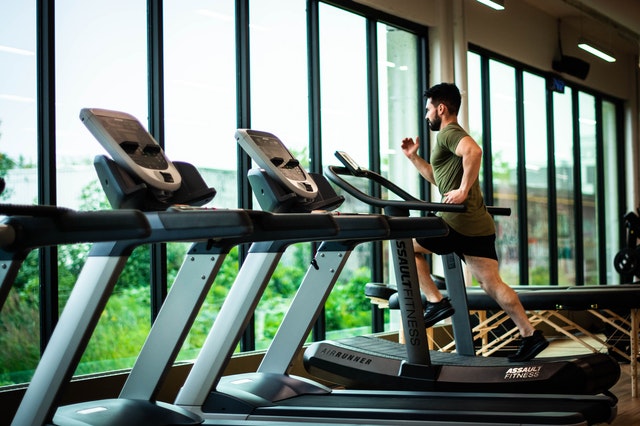
When it comes to losing weight and getting in shape, practicing cardio activities for short bursts of time at very high intensity is the best bet. Where running a few miles a day or going for a long walk are great activities to support a healthy way of living, HIIT is one of the best ways to rapidly build strength and endurance.
However, keep in mind that HIIT is not appropriate for everyone. Talk to your doctor or trainer before starting this workout.
Pick a cardio activity that you enjoy the most. Walking, running, and swimming, are all good options.
A warmup of about 5 minutes is a must. Start with a warmup. Choose a smaller interval length, such as 30 seconds. Do 30 seconds of high-intensity workout of your chosen activity, followed by a longer period of recovery, such as 2 to 5 minutes. Repeat the activity 10 times. For instance, if you’re a runner, try all-out sprinting for straight 30 seconds, relaxing for a minute, and repeating for 10 times. Increase the time interval as you get in a more satisfying shape.
Do this 2 to 3 times a week only to avoid injury or burnout. Supplement HIIT with a few longer, slower-paced cardio workouts for distance throughout the week
No.5. Work out at home if you can’t go to the gym.
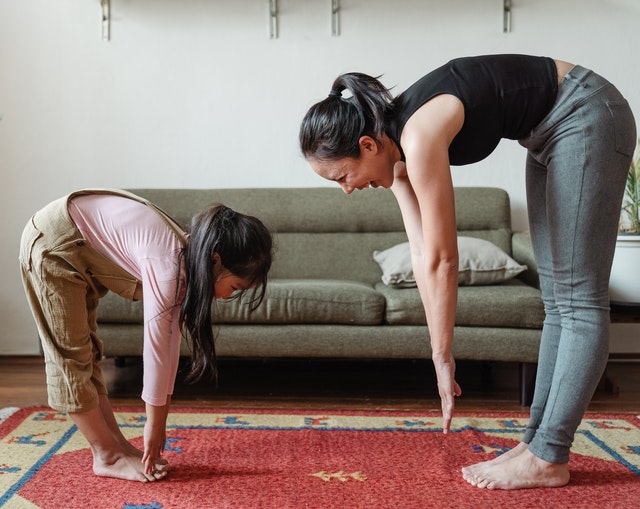
Working out at home is cheap, time-efficient, and effective. Pick up a few pieces of equipment such as push-up bars, hand-held weights, fit balls or exercise bands. Make sure to work for each major or larger muscle group using cardio, strength training, and bodyweight exercises.
While planning an at-home workout, give yourself enough time to have a warmup, cardio, or strength routine, and 10-15 minutes of cooldown.
Aim to do 30 minutes of cardio thrice a week and 20 to 30 minutes of strength training workout 3 times a week, followed by efficient stretching to prevent muscle soreness. Even after good stretching, just to make sure you don’t produce any ache, apply an ice pack (cold compression) as soon as you finish your workout.
Where to apply ice packs??
They should be applied to each muscle group you exercised on a particular day, for at least 10- 15 minutes. This will make sure you don’t produce any post-exercise muscle soreness and aches.
Types of exercise you can do at home without weights or equipment may include Barre, yoga, and HIIT (high-intensity interval training).
No.6. Get a workout buddy to help keep you motivated.

Working out with someone not only keeps you on track but makes your workout more fun! Make sure to find someone with a similar schedule and aims to yours who will keep you motivated.
Method 2: Diet
1) Eat more vegetables and fruits.

Having a diet rich in low glycemic index veggies and fruits is essential for losing weight. It also provides your body with vital nutrients, such as vitamins, minerals, and fiber. Eat at least 5 servings of vegetables and fruits a day, and try to vary up the color as much as you can. Add some fruit and vegetables to every meal to have your servings in. Stick to veggies and fruits that have a low glycemic index or low in sugar, such as the foods listed here: https://www.nhrmc.org/~/media/testupload/files/low-gylcemic-meal-planning.pdf?la=en.
Breakfast: add spinach, mushrooms, or tomatoes to your morning eggs instead of cheese. If you eat cereal or oatmeal every day, add fresh fruits such as bananas, strawberries, or blueberries. Get your oatmeal more filling by adding wholesome sources of fat, such as nuts, coconut oil, or flax seeds.
Lunch: Try to make a big, filling salad with leafy greens, a lean protein (such as chicken or fish), dried fruit, nuts, and some, peppers, carrots, broccoli, or onion, and some greens.
Dinner: Instead of canned tomato sauce, sauté up broccoli, garlic, tomatoes, and peppers in olive oil, groundnut, or sunflower oil (as they contain high smoke point which is good for cooking at higher temperatures and is proven good for one’s health) and eat them with brown rice or sweet potatoes. To help fill you up, add a healthy protein, such as soybeans, tofu, cottage cheese, or fish.
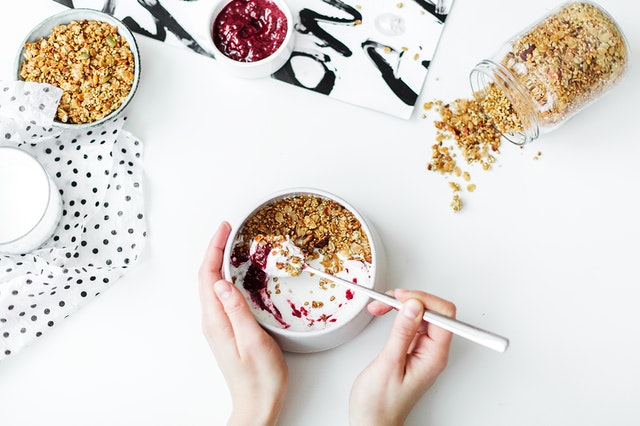
2) Get rid of unhealthy foods in your kitchen.
It’s easy to make a change if you don’t have a bunch of junk food around. However loads of junk in your fridge and pantry will tempt you to make less healthy choices! If you’re actually going to start taking your health seriously, it’s wise to start from scratch. Get rid of all unhealthy foods that you have in your kitchen, instead, stock up on healthy alternatives. This will eradicate any temptation to go back to your older ways.
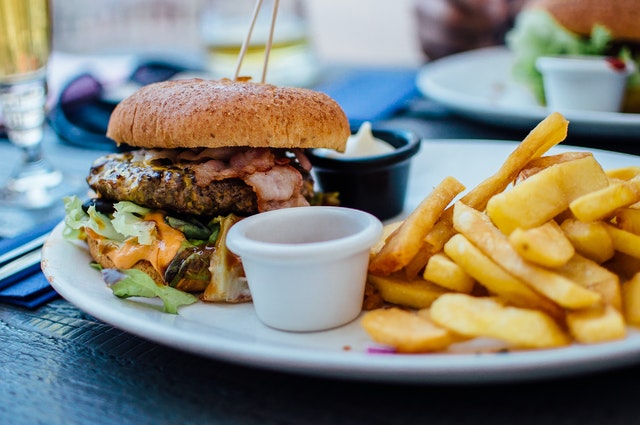
3) Avoid extremely processed fats and refined sugars.
Highly processed foods loaded with fat and refined sugar are associated with diseases such as diabetes, heart disease, cancer, and stroke. They fill you up without actually giving many of the nutrients you need.
Fill your closet with natural foods like whole grains (oats, barley, buckwheat, whole-grain bread, and pasta), fruits and veggies, legumes, nuts, and protein or probiotic-rich dairy products (kefir, Greek yogurt, cottage cheese).
Get all-natural sweeteners instead of sugar frees, which are artificial ones. For those with a sweet tooth, use honey, stevia, or agave instead of sugar in your tea, coffee, and baked stuffs.

4) Stop snacking mindlessly.
Consuming when you’re not hungry is one of the simplest ways to gain undesired weight. Before you take a snack, stop and question yourself —are you really hungry, or just tired or restless? Only snack when you’re actually hungry, and when you do, try to eat snacks essential in protein, as this will keep you full for a longer period.
A piece of whole-grain toast with nut butter, a mozzarella cheese stick, a hardboiled egg, a bowl of sprouted grains, or veggies are great options for beating the mid-afternoon crash.
5) Try intermittent fasting to lose weight faster.
Intermittent fasting works with the natural rhythms of your body to help you burn fat and strengthen muscle more effectively. Try an easy intermittent fast by sticking to eating during the morning and early afternoon—for instance, between 7 AM and 3 PM.
Don’t have anything in the late afternoon or evening.
Avoid the lure to snack between your meals, and clearly don’t snack at night. Your body will be active burning fat during those times!
When you eat, try to stick to nutritious feeds like fresh veggies and fruits, peas and beans, whole grains, lean proteins (like chicken and fish), and healthy fats (like vegetable oils, avocados, and nuts).
6) Speak to your doctor regarding vitamins and other dietary supplements.

Some supplements can increase your energy and enhance your overall wellbeing—especially if you have any vitamin insufficiencies or deficiencies. Talk to your doctor if a multivitamin or specific vitamin supplements might develop your health. Inform them about any health conditions you possess and give them a full list of any supplements or medicines you’re already using, since this can affect what you can take cautiously.
It’s usually best to have vitamins and minerals from your food, but supplements can be effective if you have a deficiency or a health issue that make it difficult for you to get all the nutrients you need from your diet.
Some supplements that might be crucial to your health include vitamins C, D, and E, zinc, glutathione and chromium.
Method 3: Stress Reduction
Take at least 7-8 hours of sleep each night.

Getting 7 to 8 hours of sleep a night is extremely essential to maintain a healthy lifestyle. Taking a good night’s sleep enhances your ability to learn, make good judgments, and cope with change. Deprivation of sleep is also associated with depression, obesity, and heart disease.]
Everybody needs a different amount of sleep. Some will feel fresh and rested even after 6 hours, others after 10. Experiment with sleeping a varying amount of hours per night and see which quantity makes you feel satisfied.
Build a good bedtime ritual. Relax with a book for 30 minutes before going to bed, or drink herbal tea and stretch. It’s also necessary to stick to a sleep schedule, even on the weekends, so that your body can remain consistent.
If you still have difficulty sleeping, some supplements may help. For instance, getting added magnesium may improve your sleep at night. Try a 200-400mg magnesium supplement after consulting your doctor. Melatonin, which is a natural sleep hormone, can also enhance your sleep quality by regulating your sleep/wake cycle.
Practice yoga to increase your strength and relieve stress.
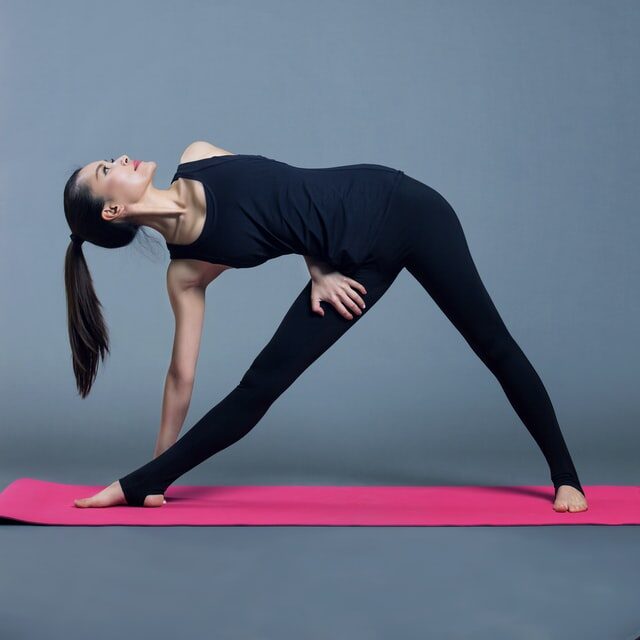
Yoga is a great venture for building strength, flexibility, and mind-body awareness. It strengthens the muscle of your back, core, arms, and legs. It allows you to concentrate simply on breathing, thus enhances relaxation.
Invest in some classes to learn the techniques correctly. After that, you can either extend classes or practice on your own.
You can also download a yoga app or attend yoga videos on YouTube.
Soak away stress in a warm bath.

A warm bath is a great way to relax, but it also has other advantages! If you’re feeling confused or under the weather, hop in the tub, the warm shower, or even a sauna. The warm water and steam can relieve dry sinuses, reduce your blood sugar, aid you burn calories and cleanse clogged pores.
Add a little Epsom salt to your shower to improve relaxation and relieve aching muscles.
Begin meditating to feel more relaxed.

Meditation assists you to become more connected with yourself and the world around you, and it’s an excellent way to relieve stress. It helps you to reduce ego and recognize your thoughts as simple thoughts, patterns that encourage joy, mindfulness, and contentment.
Start slow. Award yourself 7 to 10 minutes a morning to sit and concentrate on your breathing.
If you’re spiritual or religious, meditating, praying, or reading texts related to your faith may also aid you to relax and feel more at peace. Even if you don’t follow any particular spiritual ideas, you might find self-help books or philosophical manuals comforting.
Keep your brain active by learning new things every day.

Learning new things is the best workout one could give to the brain. People who are open-minded and inquisitive about the world around them tend to have greater mental health. Learning leads to creativity and enhances self-esteem. When you’re overwhelmed, learning something new can assist you to feel more productive and positive. Try to learn something new each day!
Read a book or a magazine that interests you the most for at least 15-20 minutes a day.
Discover a new language. Learning different languages keeps your brain active. It widens your perspective of the world and opens you up to different travel opportunities. Download an app like Duolingo on your mobile for an easy and friendly language learning tool.
Watch something funny to make you relax and rest.

Not only is it fun to laugh, but it also brings tremendous health benefits! To alleviate stress, enhance your mood, and strengthen your immune system, watch your favorite funny TV show or a movie, or watch out some standup shows on YouTube.
It’s always more fun to laugh with a loved one or friend, so get together and watch some comedy or crack jokes with someone you care about!
Take care and have a good day.
Read more : How to get a little healthier, while just being as lazy?





